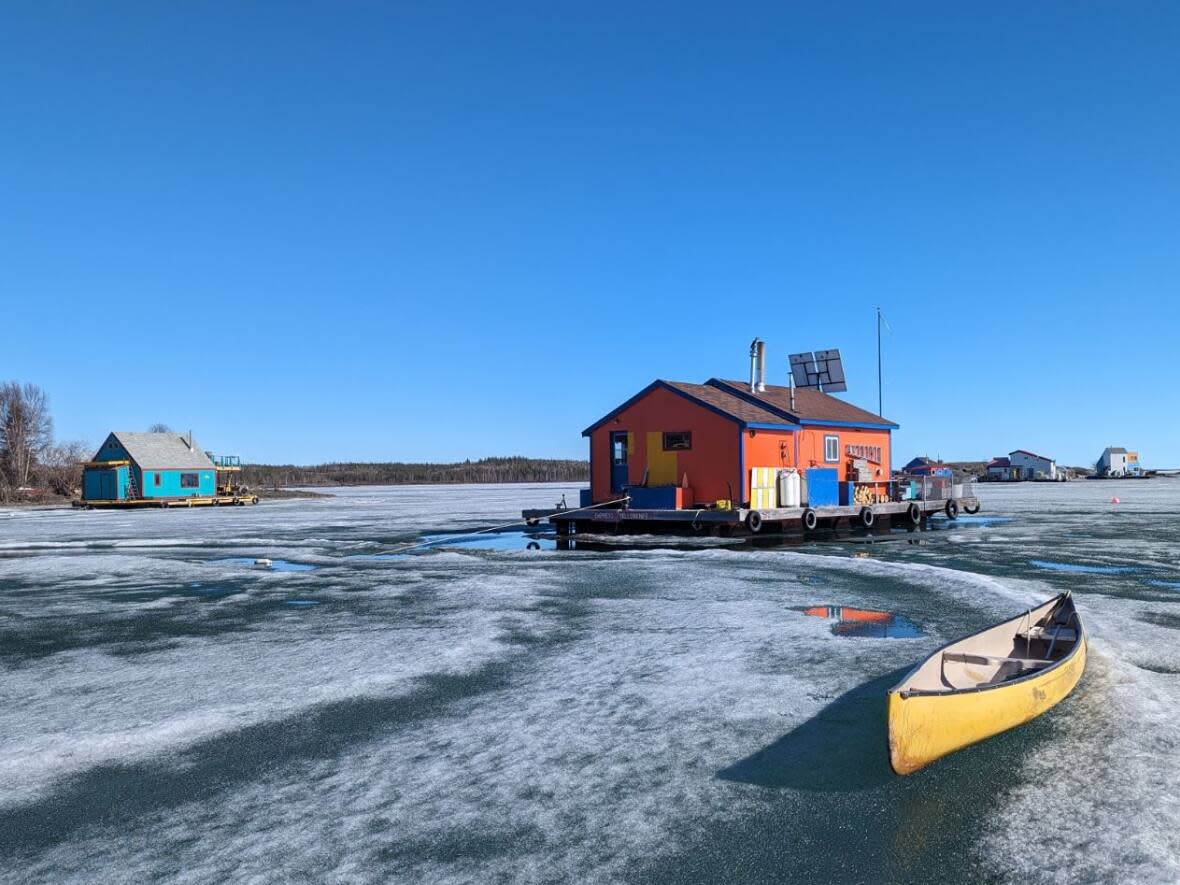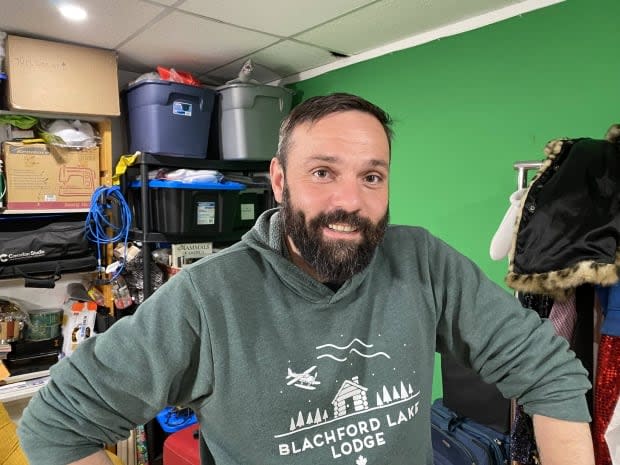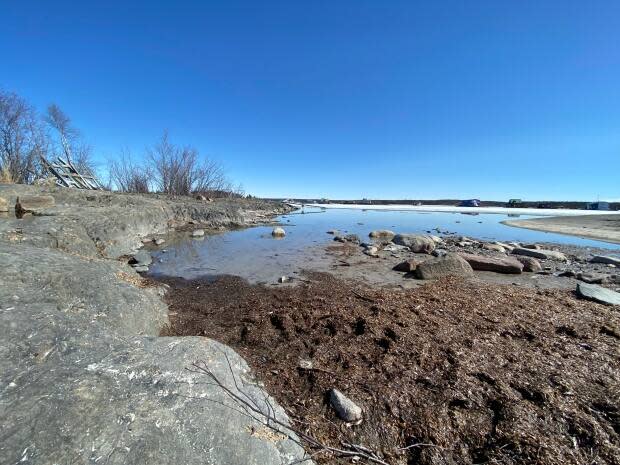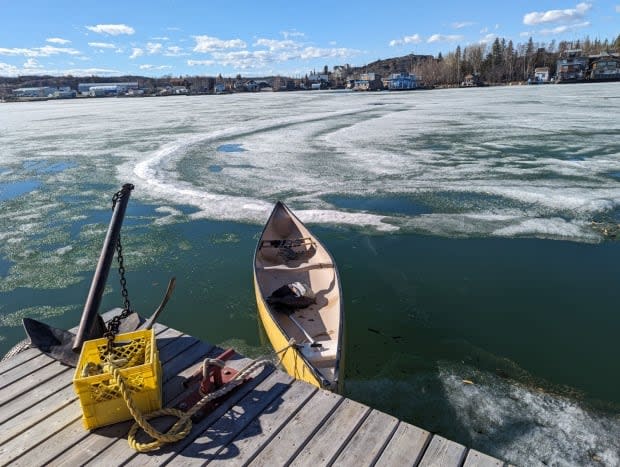Water in N.W.T.'s Great Slave Lake is now so low, some houseboats won't float

Martin Rehak isn't quite sure what to make of it yet, as he sees some of the houseboats around him on Yellowknife Bay sitting on ground that's normally underwater.
His own home is still afloat.
"I don't know if it's supposed to be concerning or not," he said. "I mean, it's different — but I don't know if it is good or bad."
"There's at least two or three [houseboats] right now, I could think of off the top of my head, who normally would be floating but are sitting on the floor of the lake."
According to the latest water monitoring report, issued by the territorial government last week, Great Slave Lake is the lowest it's ever been recorded at this time of year. The low water means there are vast areas of exposed land in Yellowknife Bay that are typically underwater.
Rehak has been living on Yellowknife Bay for more than eight years and he estimates the water is up to a metre lower than what he is used to.

"Let's say normally your houseboat is just surrounded by water, and normally in the summertime you're going to boat or canoe up to it — but now it's sitting on the ground, and you have like three feet from your houseboat to where you park your boat and you got to walk through mud," he said.
"It's going to be a whole thing."
Another year of extreme drought
This is the second year of extreme low water in many parts of the N.W.T.
Right now, flow rates on the Slave River and many parts of the Mackenzie River are the lowest they've ever been recorded. The Liard River is also seeing a below-average flow rate, and the Hay River and Kakisa River are also lower than they've ever been recorded.
Territorial hydrologist Ryan Connon offers a simple explanation.
"The two-word answer would be 'extreme drought,'" he said. "Drought that has started in the summer of 2022, and it's sort of persisted here since then."
The relative lack of precipitation over the last couple of years, combined with extreme high temperatures, mean that water has been evaporating away without being replenished by rain or snow.
Looking at the vast areas of now-exposed shoreline on Great Slave Lake, Connon acknowledges that it's "quite shocking."
"We've been seeing it on plots and seeing the data that are showing it, but it's something else when you come out here and you can visually see how low the the water levels are right now," he said.
"The land is so flat here, so even a few centimetres of change in terms of water level has the ability to expose very large areas."
He said Great Slave Lake is currently about 25 to 30 centimetres lower than it's ever been recorded.
"It's quite drastic," he said.

The water level could rise a bit with the continuing spring melt, but Connon does not expect a big change at this point. That's because the peak snow-melt period has already passed in many parts of the drainage basin.
It would also take a lot of rain to make an appreciable difference, he said.
"Because Great Slave Lake is such a large lake, and it's such a large basin, one rainfall event over a weekend isn't going to bring water levels back," he said.
"What we would need to see to bring water levels back here would be two to three months of above-normal precipitation, well-above-normal precipitation over the areas that feed Great Slave Lake."
There are also lots of unknowns at this point, Connon said. For example, it's not clear how the low water on Great Slave Lake will affect the rate of drainage from the lake, down the Mackenzie River.
"Because we are so much lower than previous-recorded values, we really don't have a good understanding for how the system could rebound."
'Very worrying'
The low water levels are concerning to at least one former MLA.
It was only a few years ago that the water in Great Slave Lake was so high that sandbags were put on the docks on the bay to keep them from floating away, said Kevin O'Reilly, during a walk at Rotary Park in Yellowknife.
"It's very worrying … all these kinds of extremes that you know, the climate crisis is bringing on. We need to plan better for these things," O'Reilly said.

In the meantime, Rehak said he's not sure whether any of his neighbours whose houseboats are now grounded will try to move them back into the water, given how much work that would involve.
Some city residents have taken to social media to question whether a grounded houseboat would now be taxed like any other house on land in the city.
"Great Slave Lake, regardless of water levels, is considered a navigable waterway, which means it falls outside of the jurisdiction of the City of Yellowknife," said Abby Schelew, a spokesperson for the city, in an emailed statement to CBC News.

